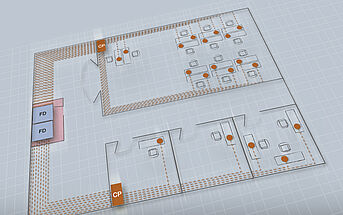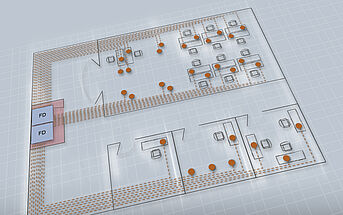Conventional & flexible networking
Conventionally structured cabling with pre-assembled data cables
Cabling designed by experts, operational flexibility, modularity as well as fast and easy installation with guaranteed performance characteristics: these are our high-performance, end-to-end, harmonized PreCONNECT® cabling systems for structured building cabling in accordance with DIN EN 50173. Copper and fiber-optic cabling technology are combined in an optimum cabling concept – simple, flexible, cost-efficient. The single-sided and double-sided pre-assembly of our LAN cabling systems permits time savings at the installation site of up to 15%.
Conventionally structured cabling with enhanced flexibility
Do you want more flexibility in the spatial layout of your workplaces? PreCONNECT® flexNET is the perfect response to the demands of the increasingly dynamic working processes in the office environment, in manufacturing and in building management. The extension and restructuring work can be performed without interrupting ongoing operations.
The right solution - depending on the requirements and the demands placed on your building network




